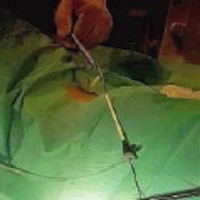Non-invasive removal of self-locking entrapped nephrostomy tubes

Submitted: March 4, 2020
Accepted: March 16, 2020
Published: October 1, 2020
Accepted: March 16, 2020
Abstract Views: 1121
PDF: 509
Publisher's note
All claims expressed in this article are solely those of the authors and do not necessarily represent those of their affiliated organizations, or those of the publisher, the editors and the reviewers. Any product that may be evaluated in this article or claim that may be made by its manufacturer is not guaranteed or endorsed by the publisher.
All claims expressed in this article are solely those of the authors and do not necessarily represent those of their affiliated organizations, or those of the publisher, the editors and the reviewers. Any product that may be evaluated in this article or claim that may be made by its manufacturer is not guaranteed or endorsed by the publisher.

 https://doi.org/10.4081/aiua.2020.3.207
https://doi.org/10.4081/aiua.2020.3.207




